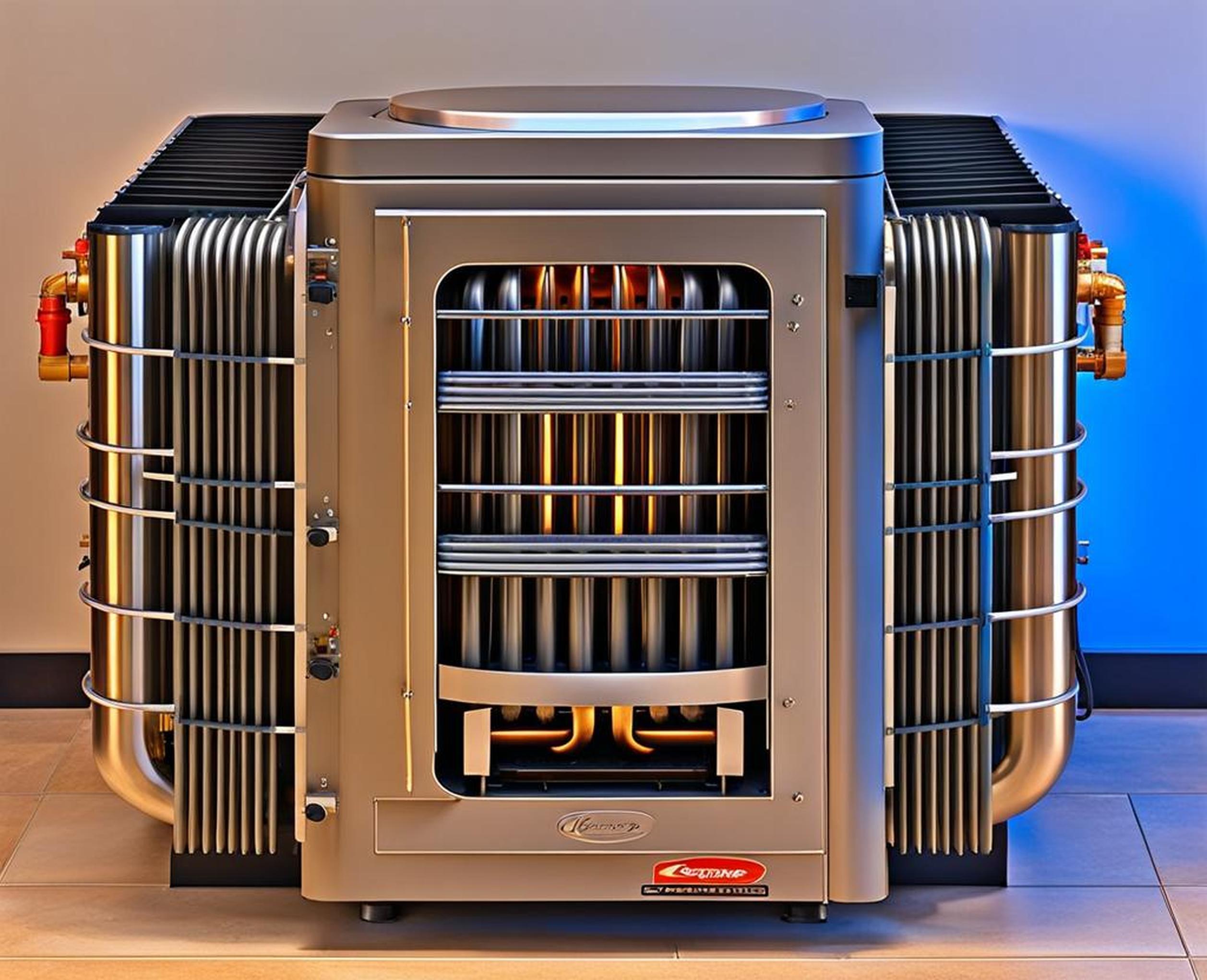Is your furnace firing up but failing to pump out any heat? The temperature keeps dropping, yet your furnace persists in running cycles with no hot air coming from the vents. As you huddle under blankets trying in vain to get warm, what could be more frustrating?
A non-functioning furnace in cold weather is every homeowner’s nightmare. But before you panic, the problem may be an easy DIY fix. Oftentimes, simple troubleshooting steps can get a balky furnace humming along again, restoring cozy warmth to your home.
Step 1 – Check the Thermostat
The thermostat acts as the control center for your furnace. This clever device continually monitors room temperature through sensors. When the ambient temperature drops below your thermostat setting, it sends a signal to activate the furnace and circulate warm air until the desired temp is reached again.
So if your furnace keeps turning on but isn’t heating up the house, the issue could be as simple as a thermostat set incorrectly. Here’s how to troubleshoot a potential thermostat malfunction:
- Ensure the thermostat mode is set to “Heat.” If it’s still on “Cool” or “Auto” from summer, the furnace won’t ignite the burners.
- Check that the temperature is raised above the current room temperature. If set lower, the furnace won’t perceive a need for heat.
- For non-programmable thermostats, test or replace the batteries if needed. Weak batteries could prevent proper operation.
- Programmable models – verify the time/day settings are correct. Incorrect clock settings disrupt scheduled temperature changes.
- Inspect for any loose wire connections to the thermostat that may cause communication errors.
Resetting the thermostat is an easy first step in diagnosing furnace issues. If adjusting the thermostat settings doesn’t resolve the lack of heat, then it’s time to move on to examining other potential trouble spots.

Step 2 – Examine the Pilot Light
Older furnace models utilize a pilot light – a small, contained flame that acts as an ignition source for the furnace burner. More modern systems have an electronic ignition, but a pilot light serves the same function. This tiny gas flame heats a thermocouple which signals the gas valve to open when heat is required. If the pilot light goes out or is obstructed, the burner won’t ignite.
To troubleshoot pilot light issues:
- Check that the pilot light is actually lit. If not, carefully follow relighting instructions printed on the furnace.
- Inspect the color and quality of the flame. It should burn bright blue with little to no yellow tipping.
- Use a brush or compressed air to clear any dirt or debris around the pilot light assembly.
- Assess if the flame seems abnormally small, irregular, or unstable. Replace the pilot assembly if this persists.
Taking a quick look at the pilot flame can help get the furnace firing properly again. Just be sure to shut off the gas supply first and allow any residual gas to dissipate before relighting to avoid risk of explosion.
Step 3 – Clean or Replace Air Filter
Here’s another straightforward furnace fix – inspecting the air filter. This removable filter is typically located near the blower fan compartment. Its job is to trap dust, dirt, pollen and other debris floating in the return air before combustion. But over time it can get seriously gunked up, restricting airflow throughout the system.
To maintain proper air circulation:
- Check your filter monthly and clean or replace if very dirty.
- Clogged filters should be replaced with new ones – don’t just rinse and reinstall.
- Run the blower fan briefly to ensure the filter is seated properly.
- Never operate your furnace without a filter installed – this damages the blower fan.
Upgrading to a better quality, pleated filter improves airflow while catching more contaminants. Just remember to change it more frequently. Proper air filter maintenance keeps your furnace running efficiently all winter long.
When to Call a Professional
If you’ve verified the thermostat settings, inspected the pilot assembly, and changed the air filter, yet your furnace still isn’t producing heat, it’s probably time to call in a professional. Potential causes of persistent furnace issues include:
- Cracked or damaged heat exchanger
- Broken blower fan motor
- Faulty gas valve
- Malfunctioning high-limit switch
- Bad flame sensor
- Ignition system failure
Repairing or replacing internal furnace components requires specialized training, equipment, and expertise. Only qualified HVAC technicians should handle complex troubleshooting or servicing of gas or electric heating systems. Safety is also a top concern with both types of furnaces, as leaking gas and improper electrical wiring can be extremely dangerous.
Tips for Hiring a Furnace Technician
- Verify licensing, bonding, and insurance coverage.
- Look for technicians certified by NATE – North American Technician Excellence.
- Check reviews and ask for referrals from satisfied customers.
- Request an estimate of repair costs upfront.
- Inquire about guarantees or warranties on parts and labor.
Calling a professional at the first sign of trouble can prevent costly breakdowns or hazardous conditions down the road. Technicians have the tools and know-how to get your furnace running safely and efficiently again quickly.
While complex furnace repairs are best left to the experts, many common problems can be easily resolved through simple troubleshooting steps:
- Verify the thermostat mode, temperature, and power supply.
- Inspect the pilot light assembly and relight if necessary.
- Check, clean or replace the air filter.
Following a seasonal maintenance checklist will also help minimize issues. And remember – if your furnace fails to respond after simple DIY fixes, call a professional. Stay warm and keep your home comfy with a properly operating furnace!
